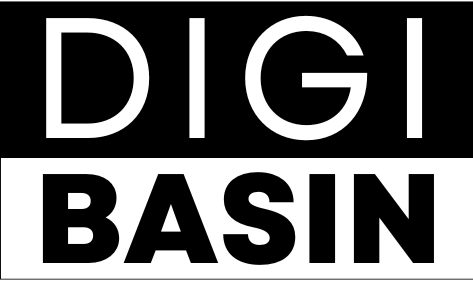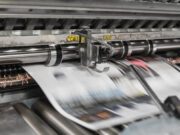If you’re just starting your investment journey or looking to expand your portfolio with U.S. stocks, chances are you’ve come across the term CFD trading. You’ve also probably heard of buying real shares. Both are popular methods of participating in the stock market, but they are fundamentally different in how they work, how you make (or lose) money, and what kind of risks you’re taking.
As a professional stock trader based in the UK with many years of experience, I’ve seen countless beginners jump into trading without truly understanding the tools they’re using. Knowing the difference between CFD and real stock trading can save you from costly mistakes and help you build a smarter, safer portfolio.
Let’s explore both concepts in a clear and beginner-friendly way. We will do this by using real-world examples and up-to-date facts so you can decide which is right for you.
What Is CFD Trading?
CFD stands for Contract for Difference. When you trade a CFD, you’re not buying the actual asset (such as a stock or commodity). Instead, you’re entering into a contract with your broker to speculate on the price movement of that asset.
If the price moves in your favour, you make a profit. If it moves against you, you take a loss. You don’t own the underlying stock; you’re simply trading on the difference between the opening and closing price.
Example:
Let’s say Apple (AAPL) stock is trading at $180. You believe it will rise to $190. You open a CFD buy position (called “going long”). If Apple rises to $190 and you close the trade, you earn the difference ($10 per share). However, if it falls to $170, you lose $10 per share.
Also Read:
- Long-Term vs Short-Term Stock Trading: Which One Is Safer for Beginners?
- The 7 Best Stock Trading Apps for New Investors
- How to Read Stock Charts for Basic Technical Analysis: A Beginner’s Guide
What Is Real Stock Trading?
Real stock trading means you are buying actual shares of a company. These shares represent partial ownership in that company. If the company grows, so does the value of your investment. You may also receive dividends, which are cash payments to shareholders.
When you own real stocks, you can hold them as long as you like. You can also transfer or gift them, vote in shareholder meetings, and benefit from long-term capital gains.
Example:
You buy 10 shares of Tesla at $200 per share. If Tesla’s price increases to $250, your investment is now worth $2,500. You also own part of the company, and if they pay a dividend (Tesla doesn’t yet), you’d receive it.
Key Differences Between CFD and Real Stock Trading
1. Ownership
- CFD: You don’t own the stock. You’re only speculating on price changes.
- Real Stock: You do own the actual shares of the company.
This is one of the most important differences. Ownership gives you more rights and usually more long-term benefits.
2. Leverage and Margin
- CFD: Most brokers offer leverage, allowing you to control large positions with a small deposit.
- Real Stock: Typically, you buy shares with the full amount or use limited margin (if approved).
For example, a CFD broker may offer 5:1 leverage. That means a £1,000 deposit allows you to control £5,000 worth of stock. While this increases potential profits, it amplifies losses too.
According to the UK Financial Conduct Authority (FCA), around 70–80% of retail CFD traders lose money. Leverage is a big reason why.
3. Trading Costs
- CFD: Most brokers charge spreads (the difference between buy and sell price) and sometimes overnight fees.
- Real Stock: You may pay a commission to buy or sell shares, but there are usually no daily holding fees.
CFDs are better for short-term traders due to lower upfront costs. However, if you hold a CFD for weeks or months, the overnight fees can eat into your returns.
4. Dividends
- CFD: You may receive a dividend adjustment, but it’s not always the full amount.
- Real Stock: You receive full dividends, typically paid quarterly.
If your goal is passive income, real stock ownership is a better route. Dividends can be reinvested to grow your portfolio faster.
5. Tax Treatment
- UK CFD Traders: Profits are usually taxed as capital gains, but you cannot use a Stocks & Shares ISA for CFDs.
- UK Stock Investors: You can invest through tax-efficient accounts like ISAs and SIPPs.
For U.S. residents, stock profits are taxed as capital gains, while CFDs may have different tax rules depending on the broker and jurisdiction. Always consult a tax advisor.
6. Trading Hours and Flexibility
- CFD: Often allows extended hours or 24/5 trading.
- Real Stock: You’re limited to exchange trading hours, unless your broker offers pre- or after-hours access.
If you want flexibility, CFDs give more options. However, prices outside regular hours can be less stable and more prone to gaps.
Pros and Cons of CFD and Real Stock Trading
| Feature | CFD Trading | Real Stock Trading |
| Ownership | No | Yes |
| Leverage | Yes (high risk) | Limited or none |
| Dividends | Partial or synthetic | Full |
| Holding Costs | Yes (overnight fees) | No |
| Long-Term Suitability | Poor | Excellent |
| Tax Benefits (UK) | No ISA/SIPP access | Yes (ISA/SIPP eligible) |
| Capital at Risk | High (can lose more than the deposit) | Lower (limited to the invested amount) |
CFD or Real Stock Trading: Which One Is Safer for Beginners?
Now for the big question: Which option is safer for someone just getting started?
Long-Term Safety: Real Stocks Win
If you’re new to trading, real stocks are much safer. You’re not using leverage, so your maximum loss is limited to what you invest. You also gain the benefit of compounding, dividends, and capital appreciation over time.
Additionally, you can invest through tax-efficient accounts like a Stocks & Shares ISA in the UK or a Roth IRA in the U.S.
Short-Term Flexibility: CFDs Can Be Useful, But Risky
If you’re more experienced or want to speculate on short-term price movements, CFDs can offer flexibility. They’re ideal for trading market news, earnings reports, or short-term trends. But the risks are high, and you can lose more than you invest.
For beginners, I don’t recommend CFDs unless you’ve already traded with a demo account and understand proper risk management.
Also Read:
- How to Make a Full-time Income with Trading 212 as a Stock Trader
- How to Start Trading Stocks with as Little as $100
- 7 Best Dividend-Paying Stocks for Passive Income
How to Get Started Safely
Here’s how to begin trading in a safe, smart way:
- Start with Real Stocks: Use a regulated broker like Freetrade, Hargreaves Lansdown (UK) or Fidelity, Charles Schwab (US).
- Use Tax-Sheltered Accounts: Maximise your returns by avoiding unnecessary taxes.
- Build a Diversified Portfolio: Don’t put all your money in one stock or sector.
- Avoid Leverage: Until you’re experienced, steer clear of borrowing money to trade.
- Set Goals: Know whether you’re investing for growth, income, or short-term profits.
- Use Demo Accounts for CFDs: Practice first before putting real money on the line.
Final Thoughts
Understanding the differences between CFD trading and real stock ownership is critical for anyone looking to invest wisely. While CFDs offer high flexibility and the chance for quick gains, they come with significant risks, especially for beginners. Real stocks, on the other hand, offer ownership, dividends, and long-term growth. This makes them a much safer and more sustainable choice.
In my 10 years of trading, I’ve seen countless beginners blow up accounts by starting with leveraged products too soon. If you’re serious about growing your wealth, start with solid stocks, learn how the market works, and only explore CFDs when you’re well-prepared.


















